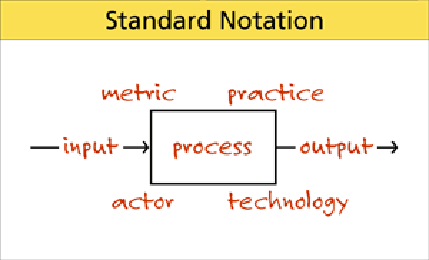I recently have been working on service-oriented architecture (SOA) models for various clients. Doing this, I have noticed that the models are fairly technical and mostly rudimentary.


I recently have been working on service-oriented architecture (SOA) models for various clients. Doing this, I have noticed that the models are fairly technical and mostly rudimentary.
Organizations are often mystified at how to implement Service Oriented Architecture (SOA). Leaders yearn to sprinkle magic ‘SOA pixie dust’ on their IT organization and transform design and development processes. But holistic architectures are not created by accident. Best practices are forged through the application of engineering discipline and rigor.
Many Global 2000 companies are not ready to embrace services. The design and development teams must first learn how to properly govern their IT processes.
The majority of SOA initiatives that are launched over the next three years will end in disappointment – some initiatives will end in complete failure, while others will simply not deliver the flexibility, reuse and efficiency that SOA promises.
This wont be because of any shortage of cool technology.
Dr. Bruce Silver defines Business Process Management as a better way to think about the business, seeing across functional and organizational lines. The existing structure of most businesses is a vertical stovepipe arrangement, which goes against this kind of thinking. Great benefits can be achieved from the technology through process automation when BPM is employed, particularly with the human tasks involved. This allows for integration and agility within the enterprise. Another benefit is the ability to monitor the process metrics.

You’ve been asked to improve how your organization works. But where to start? Do you just lock yourself away in a closet and attempt to figure out what’s going wrong or do you create an interactive web survey to elicit large volumes of improvement ideas? Based on our experience, we’ve found the most effective path to improvement lies somewhere in between. Using collaborative group working sessions, you can make better decisions and ultimately increase acceptance of change, by effectively leveraging the knowledge of your internal experts.


I slid the CD into the drive, and clicked the ‘install’ icon on my Windows XP system. The percentage complete indicator showed 5%, 35%, 78%, 91%, 99%, all within the first 20 seconds, and then stood at 99% for about 3 minutes.

IT architectures are merely a reflection of what business units have been requesting for decades. As the business changed, so too did the IT environment. Unfortunately, complex and often redundant data and application architectures can no longer adapt to increasingly dynamic business requirements. Coupled with the fact that the business architecture itself may be ill suited to respond to industry dynamics, it is clear that enterprise architecture realignment must be a collaborative effort involving key business and IT stakeholders.

Ever been to the Ikea? Ikea has starter kits for those that are starting a life for themselves away from home. My cousin, an about-to-be-student, headed to the local Ikea and selected furniture, furnishings and kitchen ‘equipment’. At Ikea, as a starter he doesn’t have to figure out what he needs for his kitchen, he can just buy the starter kit and he will have everything to prepare his daily meals: pots, pans, containers, knives, spoons, and more. It is pretty much the same set I had when I started in college.
Bob Curtice, Associate Researcher for the Institute for Process Management, Babson College and Vice President for Performance with Improvement Associates LLC. Bob Curtice is the author of books and articles on database management, systems planning, and process improvement, including “Fundamentals of Process Management” and “Role of the Process Owner”.
Curtice said that cross-functional business processes yield the most important business results. The processes need to be managed end-to-end in order to achieve benefits for the entire organization.
Everyone starts here.
You're looking for a way to improve your process improvement skills, but you're not sure where to start.
Earning your Business Process Management Specialist (BPMS) Certificate will give you the competitive advantage you need in today's world. Our courses help you deliver faster and makes projects easier.
Your skills will include building hierarchical process models, using tools to analyze and assess process performance, defining critical process metrics, using best practice principles to redesign processes, developing process improvement project plans, building a center of excellence, and establishing process governance.
The BPMS Certificate is the perfect way to show employers that you are serious about business process management. With in-depth knowledge of process improvement and management, you'll be able to take your business career to the next level.
|
Courses
|
|
|
|
Courses
|
|
|
|
Courses |
|
|
Business Architecture
|
|
|
|
Courses |
Certificate
|
|
Courses
|
|
|
|
Courses |
Certificate
|